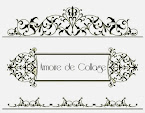As you sip your morning cup of fresh, hot coffee, you might be interested to know that coffee collectibles are becoming as popular as the beverage itself. The spread of local coffee houses by a national chain, has fueled the interest,not only in coffee, but everything coffee-related. Ironic that a beverage that is believed to have first been cultivated as early as 575 A.D., has spawned a collector frenzy that’s not but about a decade old.
Originating in Arabia, coffee was first introduced in the United States by Captain John Smith, the founder of the Colony of Virginia, in 1607, but tea was the beverage of choice. Two centuries later an unjust tax on tea resulted in a protest dubbed the “Boston Tea Party,” making the United States a nation of coffee drinkers from that day forward.
Collectors of coffee antiques are as passionate about their collections as they are about their coffee. And if you think the price of coffee is high at the corner coffee shop, you should see the prices on coffee collectibles. The most primitive, wooden coffee mills start at over $100, but most are twice that price, subject to age and condition.Double wheel table mills are $500 at the low end; the floor models start at $1000. The presence of a brass hopper will typically double the price.
For the novice collector, coffee advertising pieces and packaging items are more affordable, then graduate to coffee pots and makers. Some collectors swear that the best cup of coffee is the one their 1950s General Electric percolator makes (as seen in photo to the left). Just a word of caution. Coffee antiques require space and can become overwhelming, thus the reason collections on a grand scale are usually found in coffee shops and restaurants. Their collectible of choice is usually the urns and servers. As for the beginner, start with a beautiful porcelain coffee cup to enjoy your morning brew. A porcelain cup and saucer will cost on average, $30-60 dollars. A bone china cup and saucer less...approximately $20-30 dollars.
To brew a great cup of java add one heaping tablespoon of coffee to each half-pint of boiling water. On a larger scale,use one cupful of coffee to three pints or six cupfuls of water. The purists take it plain, but have cream and sugar on hand for all others. Although the majority overwhelmingly enjoy their coffee hot and fresh-perked, it’s enjoyed in many variations...iced, Irish Coffee made with Irish whiskey, sugar, and topped with thick, unwhipped cream, and this recipe for a “Coffee Frostie”:
2 cups brewed coffee, chilled
1 pint of Blue Bell Homemade Vanilla ice cream (or substitute
coffee-flavored ice cream)
Blend coffee and ice cream, then pour over ice cubes in tall glasses or
an over-sized coffee mug
Makes 3-4 servings. Substitute frozen coffee ice cubes
The most conclusive book on coffee antiques is a book by the same name…”Coffee Antiques,” by Edward C. Kvetko & Douglas Congdon-Martin. It includes grinders, mills, coffee makers and servers, advertising pieces, and even roasters, and also provides prices. Fortunately for the coffee antique collectors, the economic downturn kept prices from escalating for a few years, but as these items become older, the economy will not have a bearing on their value. Prices are expected to rise as the popularity of coffee continues to grow.
Saturday, January 4, 2014
Coffee...Good to the last drop, Coffee antiques...Good to the last penny
Labels:
antique,
antiques,
coffee,
collectibles,
latte,
percolator,
retro,
vintage
Subscribe to:
Post Comments (Atom)




No comments:
Post a Comment